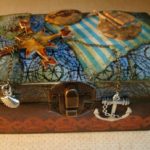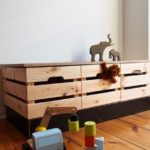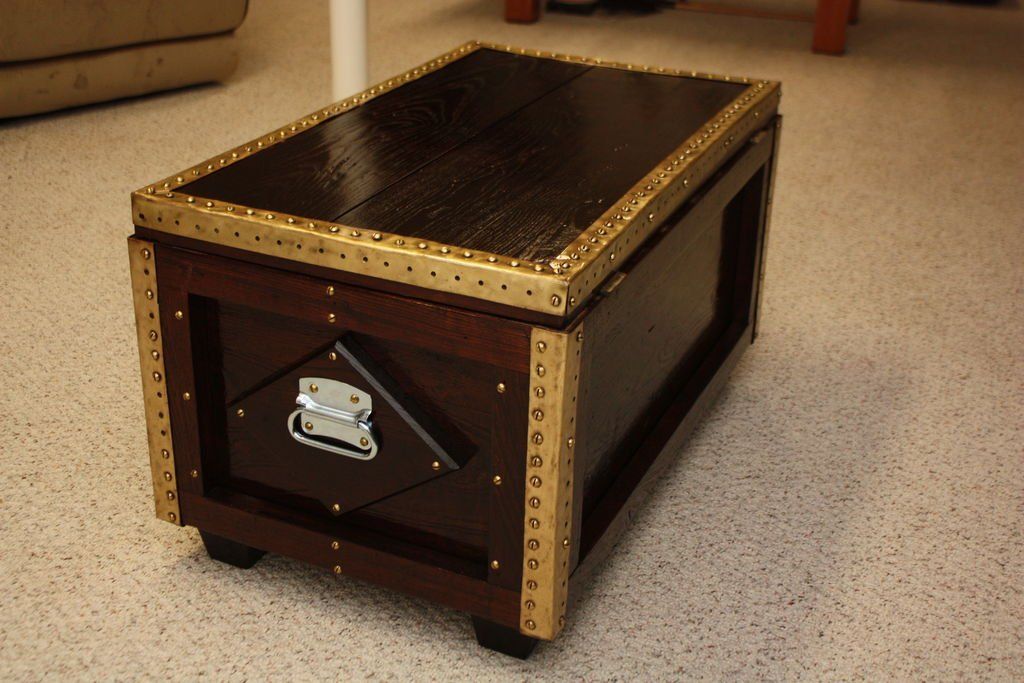DIY plywood chest
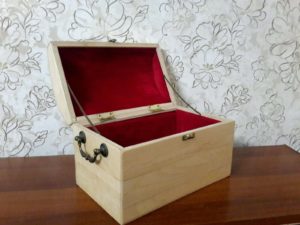 Chests have been used in the interior of houses for a long time. And although few people remembered them for a long time, recently they have begun to be used more and more often. Not only can they add interest to the overall look of the room, but it is also quite functional. They store things in them, and also use the outer upper surface as a seat or cabinet.
Chests have been used in the interior of houses for a long time. And although few people remembered them for a long time, recently they have begun to be used more and more often. Not only can they add interest to the overall look of the room, but it is also quite functional. They store things in them, and also use the outer upper surface as a seat or cabinet.
Given the popularity of this furniture, manufacturers began to produce various models of chests. However, it’s easy to do a useful thing with your own hands. In addition, the independent manufacturing method allows you to give a unique look to the item, which will become the highlight of your interior.
The content of the article
Materials and tools for work

You can make a chest in various ways; the set of things needed for work directly depends on this.
Reference. The main material can be either the usual wood, plywood, or cardboard and paper, which are accessible to everyone. However, this is not all.
To make a chest you need a number of small elements. For example, for wood or plywood you will need the following.
Parts and materials
- Loops.
- Self-tapping screws.
- A handle (or several, depending on the design decision).
- Sandpaper.
- Stain.
- Varnish.
- A piece of cotton fabric (for interior upholstery).
- Eyelets (for fastening upholstery).
- Putty or wooden plugs.
- Decor (acrylic paints, genuine leather, castle, etc.).
Tools
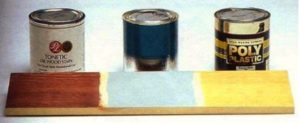
The list of tools for creating a chest with your own hands is very simple. These include:
- ruler;
- punch;
- brushes
Work order
Making a chest is of medium difficulty level. However, this is not a quick task and requires a fair level of diligence.
To obtain a high-quality result, it is recommended to use ready-made drawings.

If you have never made furniture with your own hands before, it is not recommended to deviate from the following algorithm.
- Determine the dimensions of the product: length, width and depth. This item must be completed before purchasing upholstery.
- Cut out the parts from plywood: side walls, base, lid.
- Connect the walls and bottom using self-tapping screws. The holes should be drilled in advance.
Important! The diameter of the holes should be smaller than the screws themselves.
- Fill the heads of the screws with putty or hide them with wooden plugs. You can also
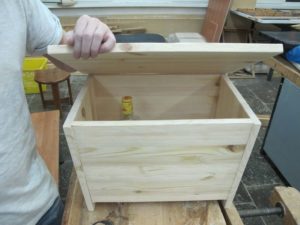 subsequently hide the hats using decor.
subsequently hide the hats using decor.
Important! When using putty, a preliminary primer will be required.
- Treat the outside of the chest with stain. Then use sandpaper to remove any raised lint.
- After complete drying, coat with varnish in one or several layers.
- We install the fittings. We drill a hole in the center and insert a handle; on the back side we attach hinges connecting the lid and the wall. If desired, we install a lock.
- Carefully cover the inside with fabric, securing it with eyelets. However, you can refuse to fulfill this point.
- Decorate the chest as you wish.
Useful tips for making a chest
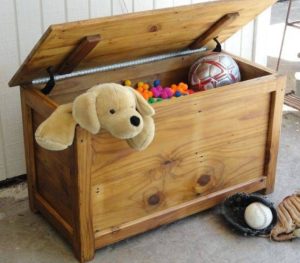
Since making chests with your own hands began long before they became fashionable, craftsmen have discovered many interesting tricks. They can make your work easier, decorate your product, or improve its performance. Among these useful tips, the most important can be identified.
- For coating use chromium oxide color paint. This will give the chest a special naturalness, visually aging it.
- Give preference to parquet varnish. It has greater wear resistance than other types.
- Install the side handles. This is convenient for both small and large chests, as it greatly simplifies their carrying.
- Pay attention to the lid stops. If possible, try not to neglect their manufacture, as this will save the product from unnecessary impacts.
- When decorating a chest, try to stick to one concept. For example, make it in a pirate style, upholstered with leather straps, or in a girlish style, painted in delicate colors and adding a pillow on top. Mixing different styles can make it look too tacky.
- If you decide to make your own chest, but have not decided on the design, get acquainted with the finished products. Some of them may inspire you to create something of your own.
Happy creativity!


